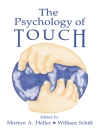Earl Hopper, in his important, profound and well reasoned book introduces a fourth Basic Assumption (Incohesion) to the three Basic assumptions (of Flight/ Fight, Pairing and Dependency) introduced by Bion. Hopper’s theory of Incohesion provides us with a new way of thinking about annihilation anxiety, which he discusses in terms of the unconscious fears of annihilation connected to the fears of separation.’
– System Centered News
‘What we may learn most from reading Hopper’s profound thinking presented in this surprisingly readable book is how he makes the bridge from his theory to the treatment of difficult patients. He identifies aggregation and Massification as a characteristic of regressed groups. In groups of the traumatized, however, where survivor guilt, and perhaps more important, survivor shame underlies the suffering, Aggregation and Massification are likely to be chronic.’
– Yvonne Agazarian
Working within the traditions of Bion, Turquet, Foulkes and Pines, and drawing on concepts and data from psychoanalysis, group analysis and sociology, this volume develops Earl Hopper’s theory of the fourth basic assumption in the unconscious life of groups and group-like social systems within a social, cultural and political transgenerational context. He argues that Incohesion: Aggregation/Massification or (ba) I:A/M (an acronym for ‘I AM’ – an assertion of personal identity when identity is under threat) is based on the fear of annihilation stemming from traumatic experience. With full respect for the constraints of the social unconscious, the personification of aggregation and massification by patients with crustacean, contact-shunning and amoeboid, merger-hungry characteristics, respectively, is illustrated with detailed clinical vignettes involving drug addicts, victims of incest and sexual abuse, and child survivors of the Shoah. Concluding with critical commentaries by senior British and American group analysts and psychoanalysts, this volume is essential reading for both analysts and their students.
Tabella dei contenuti
Foreword, Malcolm Pines, Institute of Group Analysis, London. Acknowledgements. Introduction. 1. The Theory of Cohesion Proposed by Bion and Turquet, and Modified by Others. 2. The Fear of Annihilation and Traumatic Experience. 3. The Fourth Basic Assumption: Incohesion: Aggregation/Massification or (ba) I:A/M. 4. The Personification of Incohesion: Aggregation/Massification. 5. The Treatment of Difficult Patients in Clinical Group Analysis: The Personification of Aggregation by Pandoro. 6. The Personification of Massification by Pandora. 7. An Illustration of Incohesion: Aggregation/Massification in the Extreme: A Group of Child Survivors of the Shoah. 8. Summary, Invited Critical Commentaries, Discussion and Suggestions for Further Research and Applications: Richard M. Billow, Howard Kibel, Malcolm Pines, Bennett Roth, Jill Savege Scharff and David E. Scharff, Victor L. Schermer, Walter Stone. Appendix I: Some Conceptual Distinctions about Social Formations from Sociology and Social Psychology. Appendix II: Encapsulation as a Defence against the Fear of Annihilation. References. Subject Index. Author Index.
Circa l’autore
Victor Schermer has worked as a psychoanalytic psychotherapist for over 25 years, working in the fields of mental health and substance abuse. His deep interest in spirituality has led him to study yoga and meditation; he has also served on the board of the Institute for Spirituality and Psychological Healing in Philadelphia for over 10 years.












